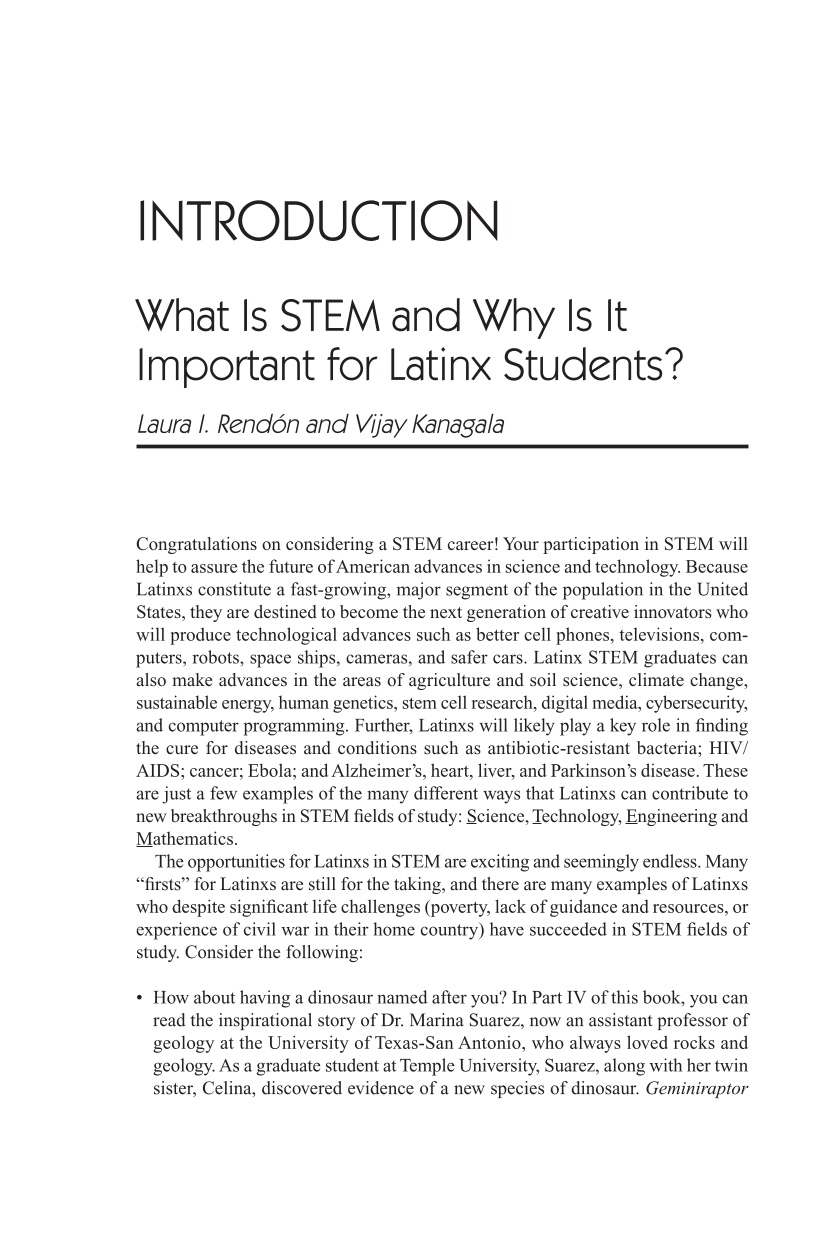Congratulations on considering a STEM career! Your participation in STEM will
help to assure the future of American advances in science and technology. Because
Latinxs constitute a fast-growing, major segment of the population in the United
States, they are destined to become the next generation of creative innovators who
will produce technological advances such as better cell phones, televisions, com-
puters, robots, space ships, cameras, and safer cars. Latinx STEM graduates can
also make advances in the areas of agriculture and soil science, climate change,
sustainable energy, human ge ne tics, stem cell research, digital media, cybersecurity,
and computer programming. Further, Latinxs will likely play a key role in finding
the cure for diseases and conditions such as antibiotic-resistant bacteria; HIV/
AIDS; cancer; Ebola; and Alzheimer’s, heart, liver, and Parkinson’s disease. These
are just a few examples of the many different ways that Latinxs can contribute to
new breakthroughs in STEM fields of study: Science, Technology, Engineering and
Mathematics.
The opportunities for Latinxs in STEM are exciting and seemingly endless. Many
“firsts” for Latinxs are still for the taking, and there are many examples of Latinxs
who despite significant life challenges (poverty, lack of guidance and resources, or
experience of civil war in their home country) have succeeded in STEM fields of
study. Consider the following:
• How about having a dinosaur named after you? In Part IV of this book, you can
read the inspirational story of Dr. Marina Suarez, now an assistant professor of
geology at the University of Texas-San Antonio, who always loved rocks and
geology. As a graduate student at Temple University, Suarez, along with her twin
sister, Celina, discovered evidence of a new species of dinosaur. Geminiraptor
INTRODUCTION
What Is STEM and Why Is It
Important for Latinx Students?
Laura I. Rendón and Vijay Kanagala









































































































































































































































































































